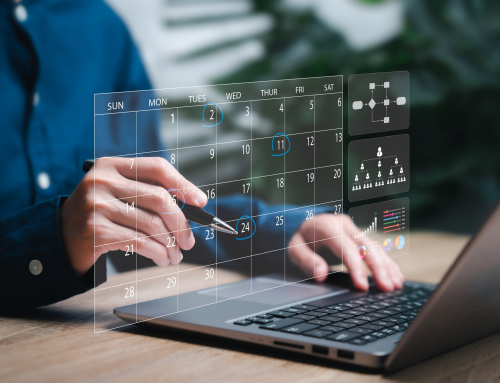How to Manage Average Call Center Queue Time Without Sacrificing Brand Loyalty
Maintaining an active call queue is one of the most critical components of running successful telecommunications for your company. Call queues are automatic services that keep customers on hold while they wait for proper routing to an agent or department.
Long wait times and backed-up call queues are annoying for customers and should be rectified immediately to boost customer retention. Businesses can measure a call center queue’s average wait time in numerous ways and work to streamline operations.
This article will help you understand all you need to know about managing a successful call queue.
What Is Queue Time?
Queue time, also known as wait time, is the time a customer spends in a call queue waiting for someone to answer their call.
Generally speaking, inbound services, especially in call centers, are organized by department. After talking to an interactive voice response (IVR) system, the customer is automatically placed into specific wait lines. From there, the amount of time they wait correlates to their queue time. Customers directed to the wrong departments experience longer queue times and are more reluctant to trust a company with future business.
In-house or outsourced communication services can choose to answer calls and organize queues in different ways. While most call centers operate on a first-come-first-served basis, other call centers prioritize differently.
Information is often saved for frequent customers, directing them more efficiently to the appropriate person. Companies utilizing departmental phone numbers can reduce queue times.
What Is the Typical Wait Time in a Call Center Queue?
The average time in a call center queue varies depending on your strategy and whether calls come during peak hours. Average call queue time is also called average wait time (AWT) or average speed of answer (ASA).
It’s essential to determine where and how calls are abandoned or dropped before discussing the average call queue time. Cutting down on abandoned calls may be more critical than reducing AWT.
How Long Is it Okay to Keep a Customer Waiting?
Some customers are willing to wait 20 to 30 minutes for complicated issues like utility problems, troubleshooting, and inquiries about expensive goods. Other customers may become angry if they wait more than three minutes.
When your call center isn’t backed up, agents should respond to 70%–80% of customers within the first 20–30 seconds. There’s no excuse for having customers wait when you have agents available.
How Is Average Wait Time Calculated in a Call Center?
The average queue wait time in a call center is calculated by adding the total wait time of all calls and dividing it by the number of calls answered.
You can calculate AWT manually with pen and paper or using a calculator, although neither is likely necessary. Often, your call management software automatically tracks AWT and abandoned calls per employee during a specified time range.
If your software doesn’t do it for you, you can calculate AWT by inputting or pasting call information into Excel or Google Sheets and using the AVERAGE function.
What Is the Average Wait Time in an Outbound Telecalling Process?
The average wait time in an outbound queue should be between 15 and 40 seconds because outbound calls are directed to more specific agents and departments. Outbound telecommunication agents have more specialized roles and establish more personal relations with customers.
Whether through telemarketing, upselling, surveying, or lead generation, outbound telecommunicators are reaching out to customers, so they likely initiated contact. In many ways, it may be worse for retention and acquisition purposes to have higher AWT in outbound services than inbound services because it’s hard to acquire a customer if they have to wait.
How Can You Manage AWT in a Call Queue?
If you’re operating or outsourcing inbound telecommunications—answering service, customer service, order taking, and technical support—it’s vital to understand and analyze current issues with your call center operations.
While some may have quick fixes, others may be more significant problems that take time to remedy.
Test Your Call Center for Strategic and Technical Issues
 You can only understand a customer’s dissatisfaction through introspection and testing. All customer complaints about a call queue should be addressed and resolved as soon as possible.
You can only understand a customer’s dissatisfaction through introspection and testing. All customer complaints about a call queue should be addressed and resolved as soon as possible.
Your call center must route calls to the right place. If you use an automated system, ensure that everything is appropriately linked and the prompts are clear. If you manually direct calls, work with employees to develop a better understanding of customer issues.
For many callers, retelling information to multiple people is more annoying than waiting in a queue. Call management technologies like call reporting and tracking help agents quickly ascertain a customer’s issues by providing the agents with background information. Call tracking technology records messages with the customer’s permission to use as a reference.
Maximize Call Quality
One of the most challenging things about running a thriving call center is managing quality and accessibility. Companies can only hire so many people to handle calls, and during busy seasons, like holidays, not all customers can be accommodated.
Businesses must be concerned about call abandonment rates, and tracking how long it takes a customer to abandon their call is vital.
It may be a viable strategy to allow some customers to abandon calls during peak times, but it’s important not to drop calls when volume is down. Nothing is worse than waiting for a call for 30 minutes to be brushed off or disconnecting unsatisfied.
If you can’t find any problem with your call queue aside from the lack of staffing, ensure your employees are friendly, aware, and apologetic. Even better, outsourcing to a call center provides scalable solutions that expand and contract based on call volume.
Increase Adherence
Adherence is used in telecommunications when referring to the percentage of the time an agent is available to take calls. Agents with a higher adherence rate answer calls more quickly than agents with a low adherence rate because they spend more time on work (as opposed to breaks, meetings, coaching, etc.).
You can calculate adherence by using this formula:
Adherence = ([Time Spent for Call-Related Activity] – [Time Spent for Non-Call Related Activities + Breaks]) / Allocated Schedule
Prioritize Alternative Communication Channels
Voice messaging isn’t the only way call centers can handle communications. You may reduce the number of calls you receive by integrating omnichannel customer service methods like:
- Chats
- Automated voicemail services
- Email communications
- FAQ and glossaries
- Social media
Given that call center employees are trained to answer customers in a direct and informative manner, you should have no issues using call center staff to handle these alternative communications. Businesses can use call recordings and scripts to structure these options.
You can make your calls more organized and planned by using these services in conjunction with telecommunications in a call center. Customers will have more faith in your services because they have a direct line with your employees and feel you’re doing all you can to help them.
Cut Down on Average Queue Time with ROI CX Solutions
If you’re looking to outsource your call center and need a well-qualified team to handle specialized inbound and outbound services, look no further than ROI CX Solutions. As a call center that deals with multinational clients, large chains, and government agencies, we’re equipped and ready to handle your call center needs.
Contact us today for a free quote. We promise we won’t make you wait.






